SPACE
Astronauts stuck in space 'confident' Boeing's Starliner capsule will bring them home
'Failure is not an option'
In the pair's first news conference from orbit, Commander Wilmore said he remained "absolutely confident" in the Starliner spaceship and team.
"That mantra you've heard, 'failure is not an option,' that's why we are staying here now," he said.
"We trust that the tests that we're doing are the ones we need to do to get the right answers, to give us the data that we need to come back."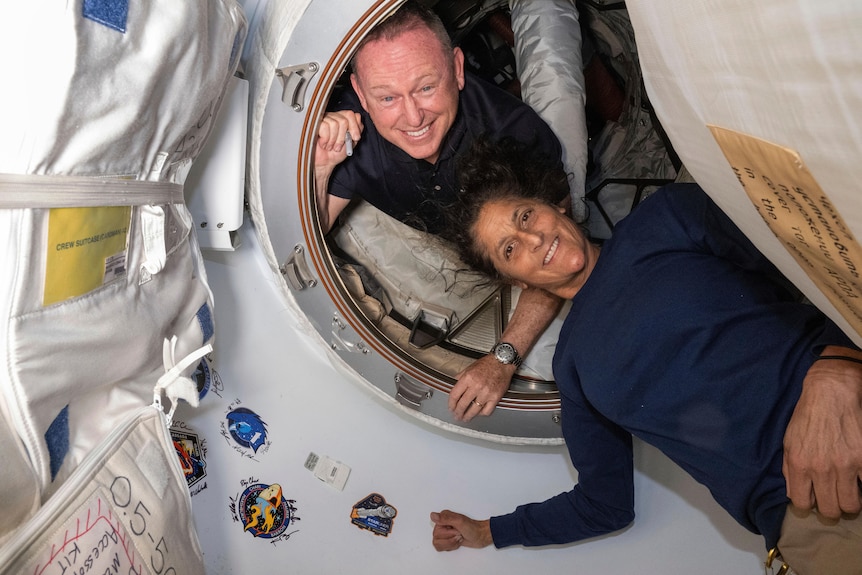
The astronauts remain confident that they will return to Earth aboard Starliner.(AP Photo: NASA)
The pair said they're not complaining about getting extra time in orbit, and are enjoying helping the station crew.
Both have previously spent stints at the orbiting lab, which is also home to a seven-member resident crew.
Return postponed again
NASA's commercial crew program director Steve Stich said the earliest the Starliner astronauts might return is the end of July.
The goal is to get them back before Boeing's competitor SpaceX delivers a fresh crew in mid-August, but that could change, he noted.
Boeing's Starliner capsule first crewed space flight faces more delays as it fights to compete with SpaceX
Boeing badly needs a space win for its Starliner venture, a years-delayed program with more than $US1 billion in cost overruns.
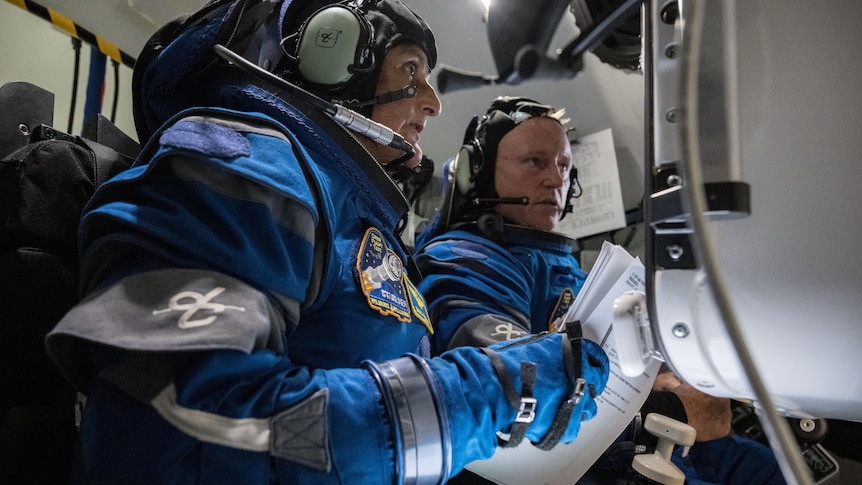
The return, which was originally scheduled for June 14, has already been postponed twice.
In 2014, SpaceX and Boeing were awarded multi-billion-dollar contracts by NASA to develop crewed spaceships to shuttle crew to and from the space station.
SpaceX's first taxi flight with astronauts was in 2020 and it has flown dozens of people on its Crew Dragon capsule since.
Boeing's first crew flight, on the other hand, was repeatedly delayed because of software and other issues.
Mr Stich insisted that NASA wasn't considering bringing their pilots back on the SpaceX capsule, in what would amount to a major humiliation for Boeing.
"The prime option today is to return Butch and Suni on Starliner," Mr Stich said.
However, he conceded that a return flight on a SpaceX spaceship can't be ruled out.
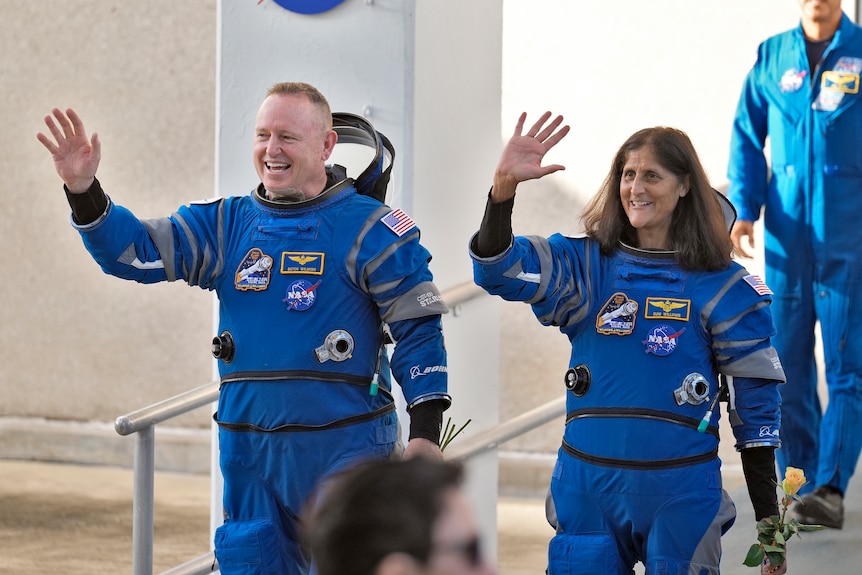
Butch Wilmore and Suni Williams are both veteran astronauts who have spent time at the International Space Station before.(AP Photo: Chris O'Meara)
Boeing executive Mark Nappi stressed that in an emergency, Starliner and its crew could return right now.
While the company does not believe the thrusters are damaged, Mr Nappi said they want to "fill in the blanks and run this test to assure ourselves of that".
Plagued program adds to Boeing's problems
Boeing's Starliner program has a long history of issues, including software glitches, design problems and subcontractor disputes.
Its first crewed launch was delayed for two years before Captain Williams and Commander Wilmore finally lifted off into space.
Boeing 737 MAX drops to 122 metres above ocean
The US National Transportation Safety Board is also investigating why another Boeing 737 MAX 8 "rolled" during a flight last month.
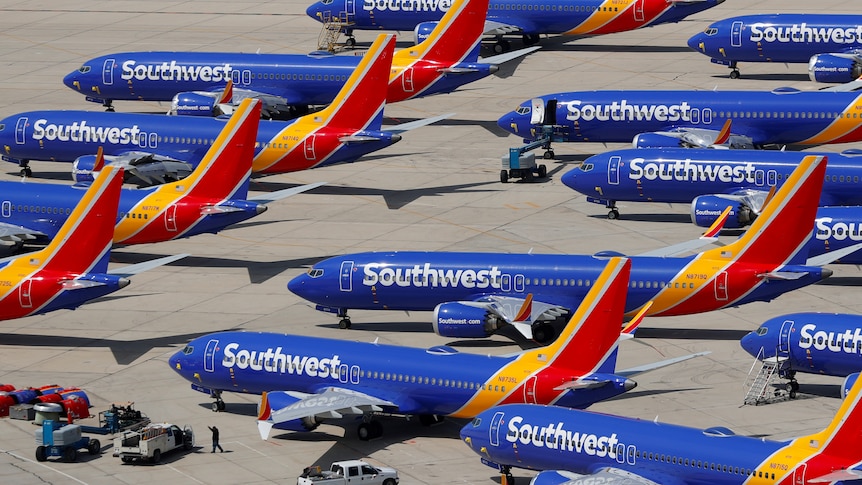
At one point, technical difficulties caused a postponement just 24 hours before launch.
In 2019, the first attempt to send an uncrewed Starliner to the ISS failed due to software and engineering glitches, before a successful second attempt in 2022.
The company has already spent $US1.5 billion ($2.2 billion) in cost overruns, on top of its US$4.5 billion NASA development contract.
Starliner's problems add to Boeing's ongoing safety and public relations struggles on its commercial aircraft side.
The aerospace giant recently agreed to plead guilty to a criminal fraud conspiracy charge in an investigation linked to two fatal crashes of its 737 MAX commercial aircraft. The company will pay a criminal fine of $US243.6 million.
Several other incidents involving Boeing's planes, including an unused emergency exit door blowing off mid-flight, have taken their toll on the company's reputation.
ABC/wires
By Nelli Saarinen with wires
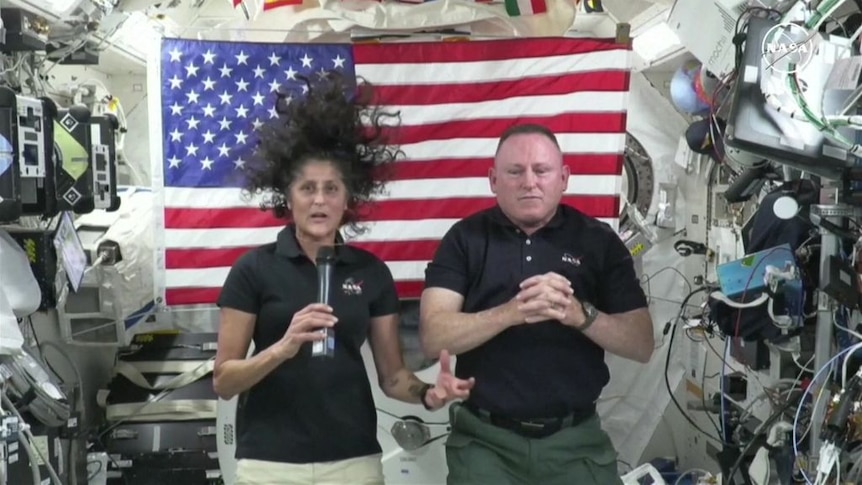
Suni Williams and Butch Wilmore have been waiting at the International Space Station for over a month.
In short:
Two US astronauts who have been stuck on the International Space Station for weeks say they are confident the Starliner capsule that flew them up can bring them down safely.
Their return has been repeatedly pushed back as engineering teams on Earth continue to run tests to understand malfunctions that came to light on the flight up.
What's next?
The earliest the astronauts might return is the end of July, NASA said, with mid-August being another deadline due to a SpaceX delivery of a fresh crew to the station.
Two US astronauts who should have returned to Earth weeks ago say they are confident that the problem-plagued Boeing Starliner spacecraft they rode up on can bring them back safely, despite significant uncertainties remaining.
"I have a real good feeling in my heart that this spacecraft will bring us home, no problem," NASA astronaut Sunita "Suni" Williams said on Wednesday during the test crew's first news conference since docking to the International Space Station (ISS) more than a month ago.
Captain Williams and mission commander Barry "Butch" Wilmore blasted off on June 5 on what was Starliner's first crewed mission, intended as the final demonstration for Boeing to obtain routine flight certification from NASA.
The crew's stay was meant to last roughly a week, but the return was pushed back because of thruster malfunctions and helium leaks that came to light during the journey.
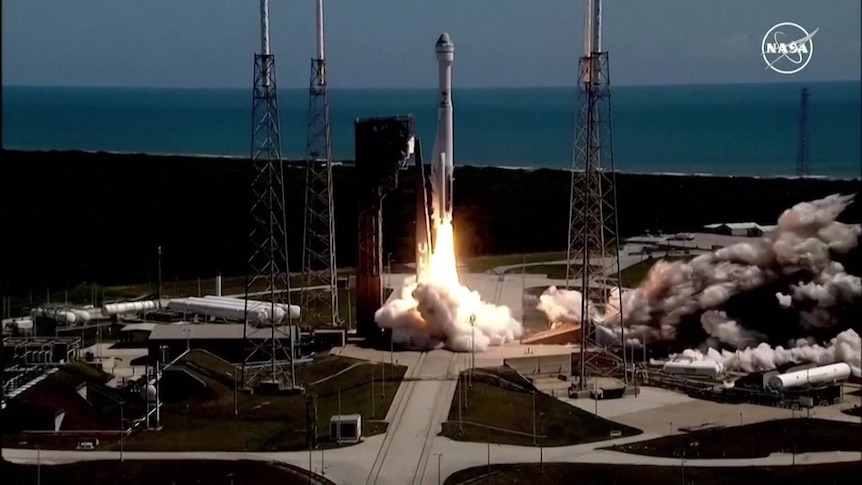
In short:
Two US astronauts who have been stuck on the International Space Station for weeks say they are confident the Starliner capsule that flew them up can bring them down safely.
Their return has been repeatedly pushed back as engineering teams on Earth continue to run tests to understand malfunctions that came to light on the flight up.
What's next?
The earliest the astronauts might return is the end of July, NASA said, with mid-August being another deadline due to a SpaceX delivery of a fresh crew to the station.
Two US astronauts who should have returned to Earth weeks ago say they are confident that the problem-plagued Boeing Starliner spacecraft they rode up on can bring them back safely, despite significant uncertainties remaining.
"I have a real good feeling in my heart that this spacecraft will bring us home, no problem," NASA astronaut Sunita "Suni" Williams said on Wednesday during the test crew's first news conference since docking to the International Space Station (ISS) more than a month ago.
Captain Williams and mission commander Barry "Butch" Wilmore blasted off on June 5 on what was Starliner's first crewed mission, intended as the final demonstration for Boeing to obtain routine flight certification from NASA.
The crew's stay was meant to last roughly a week, but the return was pushed back because of thruster malfunctions and helium leaks that came to light during the journey.
Boeing Starliner launched its first crewed flight in June.
Engineering teams back on Earth need to run tests to better understand the issues and potentially modify how Starliner will fly down.
No return date has been set so far with the end of July the earliest option, NASA officials said.
Engineering teams back on Earth need to run tests to better understand the issues and potentially modify how Starliner will fly down.
No return date has been set so far with the end of July the earliest option, NASA officials said.
'Failure is not an option'
In the pair's first news conference from orbit, Commander Wilmore said he remained "absolutely confident" in the Starliner spaceship and team.
"That mantra you've heard, 'failure is not an option,' that's why we are staying here now," he said.
"We trust that the tests that we're doing are the ones we need to do to get the right answers, to give us the data that we need to come back."
The astronauts remain confident that they will return to Earth aboard Starliner.(AP Photo: NASA)
The pair said they're not complaining about getting extra time in orbit, and are enjoying helping the station crew.
Both have previously spent stints at the orbiting lab, which is also home to a seven-member resident crew.
Return postponed again
NASA's commercial crew program director Steve Stich said the earliest the Starliner astronauts might return is the end of July.
The goal is to get them back before Boeing's competitor SpaceX delivers a fresh crew in mid-August, but that could change, he noted.
Boeing's Starliner capsule first crewed space flight faces more delays as it fights to compete with SpaceX
Boeing badly needs a space win for its Starliner venture, a years-delayed program with more than $US1 billion in cost overruns.
The return, which was originally scheduled for June 14, has already been postponed twice.
In 2014, SpaceX and Boeing were awarded multi-billion-dollar contracts by NASA to develop crewed spaceships to shuttle crew to and from the space station.
SpaceX's first taxi flight with astronauts was in 2020 and it has flown dozens of people on its Crew Dragon capsule since.
Boeing's first crew flight, on the other hand, was repeatedly delayed because of software and other issues.
Mr Stich insisted that NASA wasn't considering bringing their pilots back on the SpaceX capsule, in what would amount to a major humiliation for Boeing.
"The prime option today is to return Butch and Suni on Starliner," Mr Stich said.
However, he conceded that a return flight on a SpaceX spaceship can't be ruled out.
Butch Wilmore and Suni Williams are both veteran astronauts who have spent time at the International Space Station before.(AP Photo: Chris O'Meara)
Boeing executive Mark Nappi stressed that in an emergency, Starliner and its crew could return right now.
While the company does not believe the thrusters are damaged, Mr Nappi said they want to "fill in the blanks and run this test to assure ourselves of that".
Plagued program adds to Boeing's problems
Boeing's Starliner program has a long history of issues, including software glitches, design problems and subcontractor disputes.
Its first crewed launch was delayed for two years before Captain Williams and Commander Wilmore finally lifted off into space.
Boeing 737 MAX drops to 122 metres above ocean
The US National Transportation Safety Board is also investigating why another Boeing 737 MAX 8 "rolled" during a flight last month.
At one point, technical difficulties caused a postponement just 24 hours before launch.
In 2019, the first attempt to send an uncrewed Starliner to the ISS failed due to software and engineering glitches, before a successful second attempt in 2022.
The company has already spent $US1.5 billion ($2.2 billion) in cost overruns, on top of its US$4.5 billion NASA development contract.
Starliner's problems add to Boeing's ongoing safety and public relations struggles on its commercial aircraft side.
The aerospace giant recently agreed to plead guilty to a criminal fraud conspiracy charge in an investigation linked to two fatal crashes of its 737 MAX commercial aircraft. The company will pay a criminal fine of $US243.6 million.
Several other incidents involving Boeing's planes, including an unused emergency exit door blowing off mid-flight, have taken their toll on the company's reputation.
ABC/wires
REUTERS
July 11, 2024

Model military vehicles are displayed at a booth for Hanwha Aerospace during the 2023 Seoul International Aerospace and Defense Exhibition (ADEX) in Seongnam, South Korea, October 16, 2023. (REUTERS)
SEOUL--South Korea will deploy laser weapons to shoot down North Korean drones this year, becoming the world’s first country to deploy and operate such weapons in the military, the country’s arms procurement agency said on Thursday.
South Korea has called its laser program the “StarWars project.”
The drone-zapping laser weapons the South Korean military has developed with Hanwha Aerospace are effective and cheap, with 2,000 won ($1.45) per shot, but quiet and invisible, the Defense Acquisition Program Administration (DAPA) said in a statement.
“Our country is becoming the first country in the world to deploy and operate laser weapons, and our military’s response capabilities on North Korea’s drone provocation will be further strengthened,” DAPA said, calling those weapons as a game changer in the future battlefield.
The laser weapons shoot down flying drones by burning down engines or other electric equipment in drones with beams of light for 10 to 20 seconds, a DAPA spokesperson explained at a briefing.
Five North Korean drones crossed into South Korea, which is technically still at war with Pyongyang, in December, prompting Seoul to scramble fighter jets and attack helicopters, and try to shoot them down, in the first such intrusion since 2017.
Fighting in the 1950-1953 Korean War ended with an armistice, not a peace treaty, and a Demilitarized Zone (DMZ) between the two Koreas.
North and South Korea have both violated the armistice that governs their shared border by sending drones into each other’s airspace, the United States has said.
Countries including South Korea, China and the United Kingdom are racing to develop and deploy laser weapons, also known as directed energy weapons, according to a U.S. nonprofit think tank RAND Corporation.
There’s substantial interest in those weapons to help counter the proliferation of unmanned systems, as well as targeting missiles in flight or satellites in orbit, the think tank has said.
SEOUL--South Korea will deploy laser weapons to shoot down North Korean drones this year, becoming the world’s first country to deploy and operate such weapons in the military, the country’s arms procurement agency said on Thursday.
South Korea has called its laser program the “StarWars project.”
The drone-zapping laser weapons the South Korean military has developed with Hanwha Aerospace are effective and cheap, with 2,000 won ($1.45) per shot, but quiet and invisible, the Defense Acquisition Program Administration (DAPA) said in a statement.
“Our country is becoming the first country in the world to deploy and operate laser weapons, and our military’s response capabilities on North Korea’s drone provocation will be further strengthened,” DAPA said, calling those weapons as a game changer in the future battlefield.
The laser weapons shoot down flying drones by burning down engines or other electric equipment in drones with beams of light for 10 to 20 seconds, a DAPA spokesperson explained at a briefing.
Five North Korean drones crossed into South Korea, which is technically still at war with Pyongyang, in December, prompting Seoul to scramble fighter jets and attack helicopters, and try to shoot them down, in the first such intrusion since 2017.
Fighting in the 1950-1953 Korean War ended with an armistice, not a peace treaty, and a Demilitarized Zone (DMZ) between the two Koreas.
North and South Korea have both violated the armistice that governs their shared border by sending drones into each other’s airspace, the United States has said.
Countries including South Korea, China and the United Kingdom are racing to develop and deploy laser weapons, also known as directed energy weapons, according to a U.S. nonprofit think tank RAND Corporation.
There’s substantial interest in those weapons to help counter the proliferation of unmanned systems, as well as targeting missiles in flight or satellites in orbit, the think tank has said.
No comments:
Post a Comment